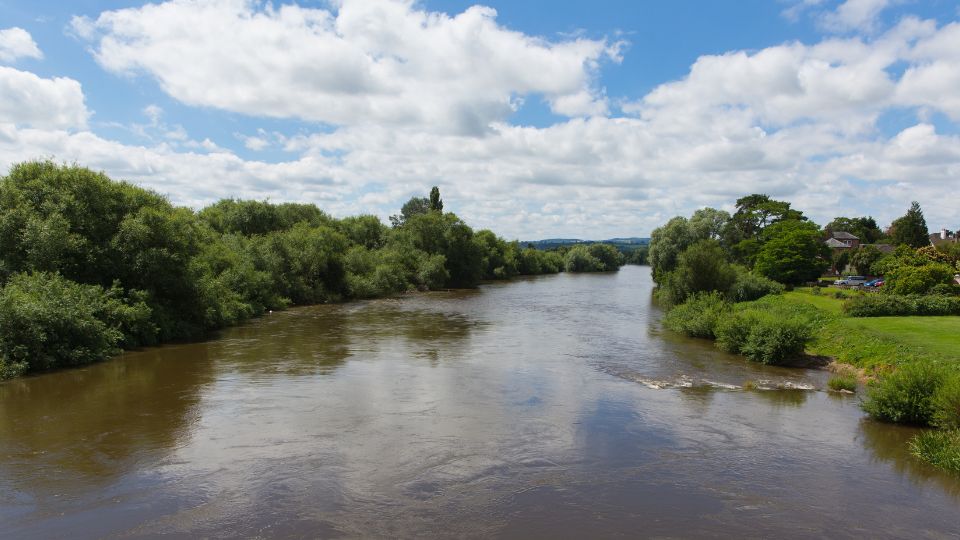
In the depths of the United Kingdom’s river systems, a silent cataclysm is unfolding.
Once pristine waterways, revered for their natural beauty, now stand as grim testaments to humanity’s darkest disregard for the environment.
The magnitude of litter and pollution infesting these once majestic rivers is nothing short of an abomination — an unsettling, dystopian reality that leaves us gasping for breath and grappling with the enormity of the crisis at hand.
Beyond the veneer of serenity and tranquillity, an unnerving undercurrent of decay and devastation emerges.
The rivers that once whispered tales of harmony and sustenance now bear witness to an escalating environmental catastrophe of unprecedented proportions.
From the industrialised heartlands to the most remote corners of the nation, a haunting symphony of discarded debris and toxic waste grips these waterways in a vice-like grip.
This exposé delves deep into the soul of the UK’s river systems. Brace yourself for an unsettling journey through the tainted arteries of our nation.
The Challenge of River Litter in the UK
River litter is a pressing concern in the UK, with significant amounts of waste polluting waterways.
According to a report by the Marine Conservation Society, over 14,000 items of litter were found per kilometre of UK shoreline surveyed in 2019.
A substantial portion of this litter originates from inland sources, including rivers, making it crucial to address the issue at its source.
Alarming Statistics on River Litter
- Surveys found that the water quality in the Thames was generally stable. However, 92% of samples showed high levels of coliform bacteria, indicating possible faecal contamination. In rare cases (1%), there were significant drops in dissolved oxygen, posing a threat to aquatic life.
- Around 80% of marine litter originates from land-based sources, including rivers.
- Plastic bottles and food packaging are among the most common types of litter found in rivers.
- Rivers are important pathways for transporting litter from inland areas to the ocean.
- Some studies estimate that over 14 million items of litter are in UK rivers.
- Over the past five years, there has been a consistent increase in water pollution incidents, with the number rising from under 6,500 in 2015 to nearly 7,600 in 2019.
These incidents are predominantly attributed to water/sewage companies and farmers.
One of the contributing factors is the more frequent activation of storm overflows, driven by urban expansion and climate change, which results in a greater amount of sewage entering rivers compared to previous years.
In 2019, storm overflows were activated an average of 35 times each, and almost one in ten overflow events occurred more than 100 times.
Over a period of nine months, a staggering assortment of items was retrieved from the River Bann.
Among the debris were nearly 20,000 plastic and glass bottles, 800 football, rugby, and tennis balls, 120 bin bags filled with rubbish, 60 discarded footwear pieces, 22 plastic ducks, 15 traffic cones, 11 abandoned shopping trolleys, and 7 bicycles.
These findings highlight the extensive pollution and waste present in the river.
Most common forms of pollution and litter in rivers within the UK
- Food wrappers
Every year, an alarming amount of litter is generated in the UK, with 300 million crisp packets and 200 million sweet wrappers ending up as discarded waste.
Did you know that crisp packets aren’t recyclable? Read more in our blog.
- Plastic
In the UK, 6.9% of all used plastic bottles are littered in rivers, making it the largest source of plastic pollution.
- Cigarette butts
Littered cigarette butts pose a significant problem in the UK, as over 14 billion out of an estimated 44 billion cigarettes smoked annually become litter.
- Cotton bud sticks
In England alone, a staggering 1.8 billion plastic-stemmed cotton buds are used annually, with 10% of them being improperly flushed down toilets, contributing to environmental pollution.
- Takeaway Containers
Among the billions of food containers used each year, approximately 0.3 billion end up as litter, presenting a substantial waste challenge.
- Sanitary products
On a daily basis, an enormous quantity of sanitary products are flushed down toilets in the UK, including 3.4 billion wet wipes, 700,000 panty liners, 2.5 million tampons, and 1.4 million sanitary towels.
- Takeaway cups
The usage of takeaway coffee cups is astonishingly high, estimated at 2.5 billion cups (equivalent to 30,000 tonnes) each year. Alarmingly, only 1% of these cups are currently recycled.
- Plastic bags
Despite an 86% reduction in single-use plastic carrier bag usage since the implementation of the 5p tax in 2014, major UK supermarkets still distributed over a billion bags in the 2017-2018 period.
- Smoking-related litter
Freshwater environments are burdened by smoking-related litter, as it constitutes 1.1% of all litter items found in these areas.
- Straws, cutlery, and stirrers
Each year, a substantial number of hard-to-recycle plastic items are used, including 4.7 billion straws, 316 million drinks stirrers, and 16.5 billion single-use cutlery items.
Rivers currently suffering from litter
River Thames, England
The River Thames, one of the most iconic waterways in the UK, faces a significant litter problem.
Plastic bottles, food wrappers, and cigarette butts are among the common types of litter found in the Thames.
According to the environmental charity Thames21, an estimated 300 tonnes of rubbish is cleared from the Thames each year.
Efforts to tackle the issue include regular river clean-ups organised by volunteers, educational campaigns to raise awareness about the impact of litter, and the installation of litter traps and nets to capture floating debris.
River Mersey
The River Mersey, flowing through the northwest of England, also suffers from litter pollution.
Plastic bags, bottles, and fishing-related waste are frequently found in the river.
The Mersey Basin Rivers Trust, in collaboration with local authorities and community groups, works to improve the river’s health.
Efforts include litter clean-ups, educational initiatives to promote responsible waste disposal, and monitoring programs to assess the effectiveness of litter control measures.
River Severn, England and Wales
The River Severn, the longest river in the UK, is prone to litter accumulation.
Plastics, particularly plastic packaging, along with cans and general waste, are commonly found in this river.
Various organisations, including Severn Rivers Trust and Keep Britain Tidy, undertake regular clean-up operations to remove litter from the Severn’s banks and improve its water quality.
These initiatives are supported by awareness campaigns to encourage responsible waste management practices.
River Clyde, Scotland
The River Clyde, flowing through Glasgow in Scotland, faces litter challenges that impact both the river and its estuary.
Plastic bottles, food packaging, and discarded fishing gear are frequently found in the Clyde.
The Clyde River Foundation, in collaboration with local authorities and community volunteers, undertakes litter clean-ups to address the problem.
Furthermore, educational programs and initiatives targeting riverside communities aim to reduce littering behavior and promote a cleaner environment.
River Taff, Wales
The River Taff, which runs through Cardiff, experiences litter pollution that affects its water quality and wildlife.
Plastics, including bottles and food containers, are commonly found in the river.
Local organisations such as Keep Wales Tidy work with volunteers to organise regular clean-up events along the Taff’s banks.
These efforts aim to remove litter, raise awareness about the impact of pollution on the river’s ecosystem, and promote responsible waste management practices among local communities.
Efforts to solve the litter problem in these rivers involve a combination of initiatives.
These include regular clean-up operations, community engagement, educational campaigns, installation of litter traps and nets, and monitoring programs.
Collaboration between environmental organisations, local authorities, volunteers, and the public is crucial in creating a collective commitment to preserving the health and cleanliness of these rivers and their surrounding ecosystems.
Moreover, in a separate study by Keep Britain Tidy, it was reported that over 80% of marine litter originates from land, with rivers serving as significant pathways for this pollution.
If you see someone fly-tipping, you can report it! Read more in our guide on how to do so.
Deploying nets to fight river litter
An Innovative Solution to Capture Floating River Litter
In response to the challenge of river litter, nets have emerged as a promising solution. In England, organisations such as The Rivers Trust, local authorities, and environmental groups have been actively deploying nets to trap rubbish.
These nets act as barriers, capturing floating debris, including plastic waste, before it flows further downstream and reaches the ocean.
Expanding Net Deployment in England
Recognising the effectiveness of nets in trapping rubbish, there is an ongoing effort to expand their deployment across England’s waterways.
Several regions have implemented net programs, with targeted placements in areas known for high litter accumulation.
By strategically installing nets, authorities aim to prevent debris from entering sensitive ecological zones and protect the overall health of the rivers.
The Role of Public Engagement and Collaboration
While nets play a crucial role in addressing river litter, public engagement and collaboration are essential for long-term success.
Efforts are being made to raise public awareness about the impact of litter on rivers, wildlife, and ecosystems.
Education campaigns and community clean-up initiatives encourage responsible waste management practices, emphasising the importance of reducing, reusing, and recycling to minimise litter pollution.
Conclusion
Addressing river litter in the UK demands a comprehensive approach that combines innovative solutions and public participation.
Nets have proven effective in trapping rubbish, and their deployment in England’s waterways showcases the commitment to preserving the health of our rivers.
However, tackling the issue requires ongoing efforts to raise public awareness, foster responsible waste management practices, and encourage collaboration among government bodies, environmental organisations, and communities.
By working together, we can protect our precious waterways, mitigate the impact of river litter, and ensure a cleaner, healthier environment for future generations.








